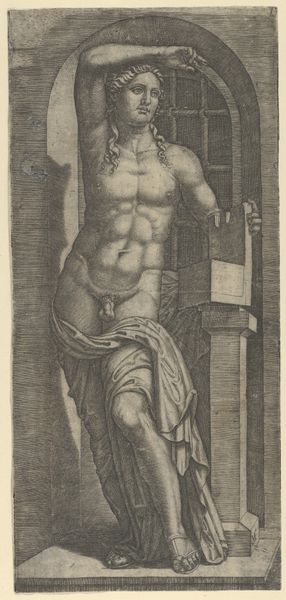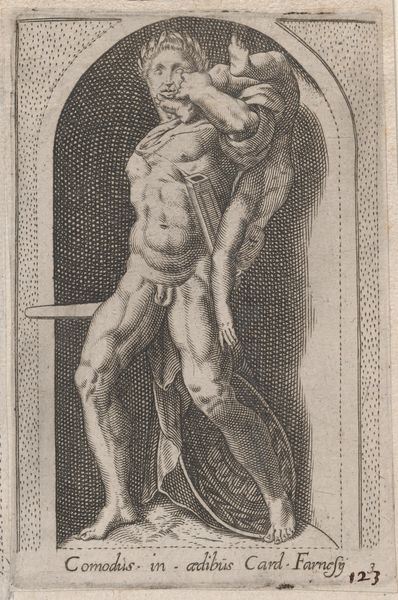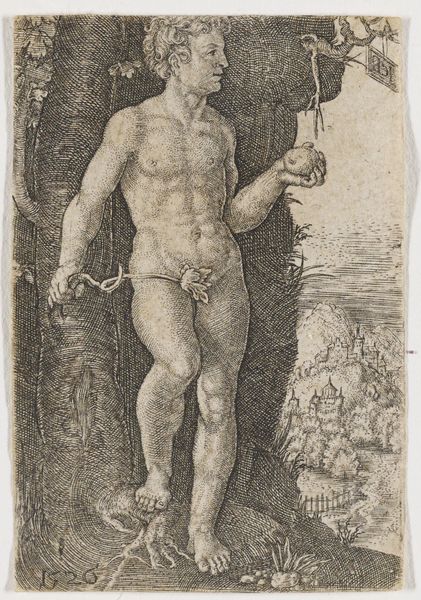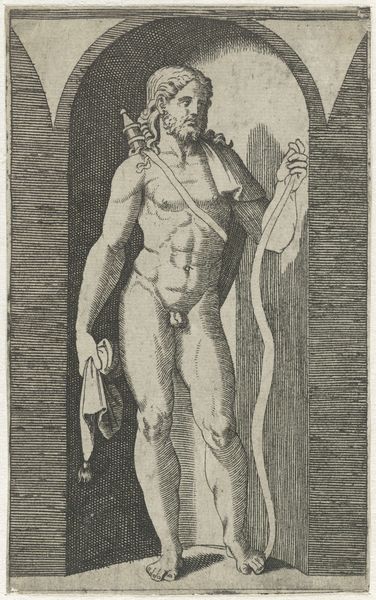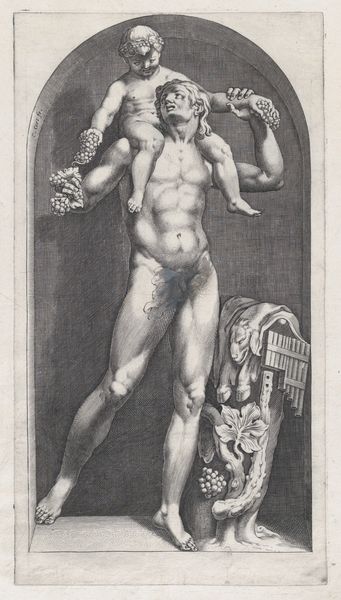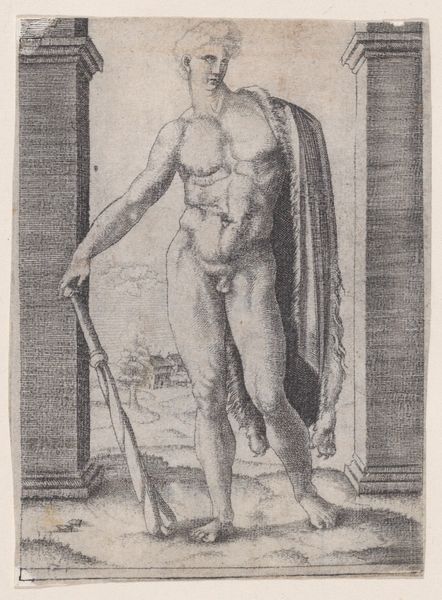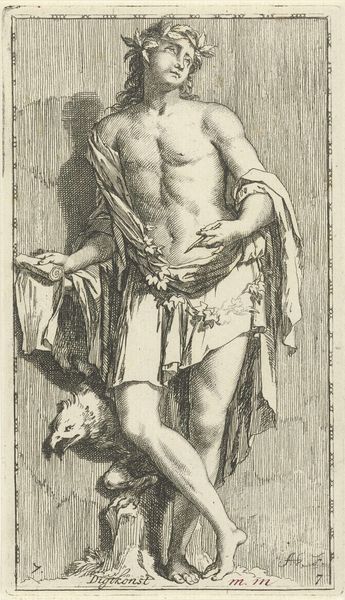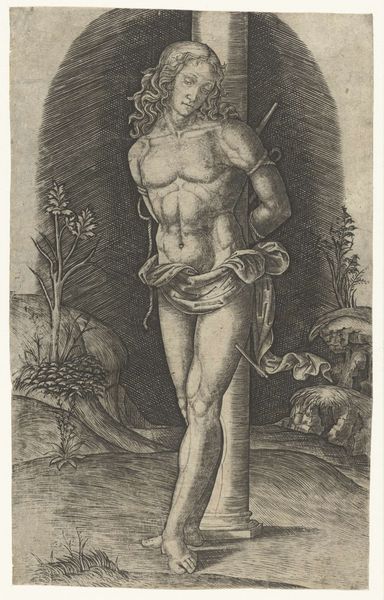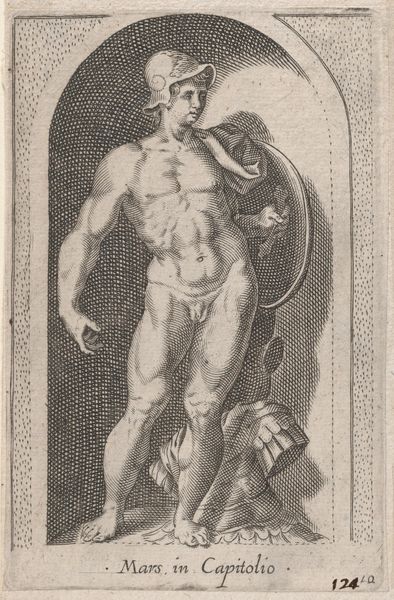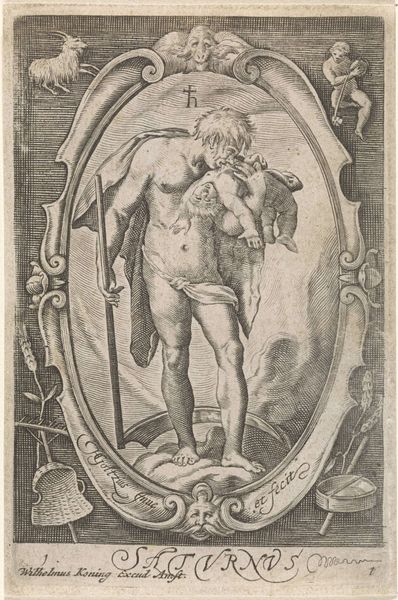
drawing, print, engraving
#
portrait
#
drawing
#
allegory
# print
#
old engraving style
#
classical-realism
#
figuration
#
11_renaissance
#
history-painting
#
academic-art
#
nude
#
engraving
Dimensions: height 212 mm, width 97 mm
Copyright: Rijks Museum: Open Domain
This print of Apollo, harp in hand, was made by an anonymous artist using the intaglio process. Look closely, and you can see how the artist created this image by incising lines into a metal plate, likely copper. This was done with a tool called a burin, or perhaps with acid, a technique known as etching. Ink was then forced into these lines, and the plate was pressed onto paper. The magic of intaglio lies in its capacity for fine detail and tonal variation. Notice how the artist used hatching and cross-hatching to build up shadows and define the musculature of Apollo, and the texture of the surrounding niche. This meticulous process, requiring great skill and patience, resulted in a print that could be reproduced and disseminated widely. In its time, printmaking facilitated the spread of knowledge and artistic ideas, but it also involved an intricate interplay of handcraft and mechanical reproduction, reflecting the changing landscape of labor and production. This challenges traditional distinctions between fine art and craft, prompting us to consider the social and economic context in which art is made and consumed.
Comments
No comments
Be the first to comment and join the conversation on the ultimate creative platform.
